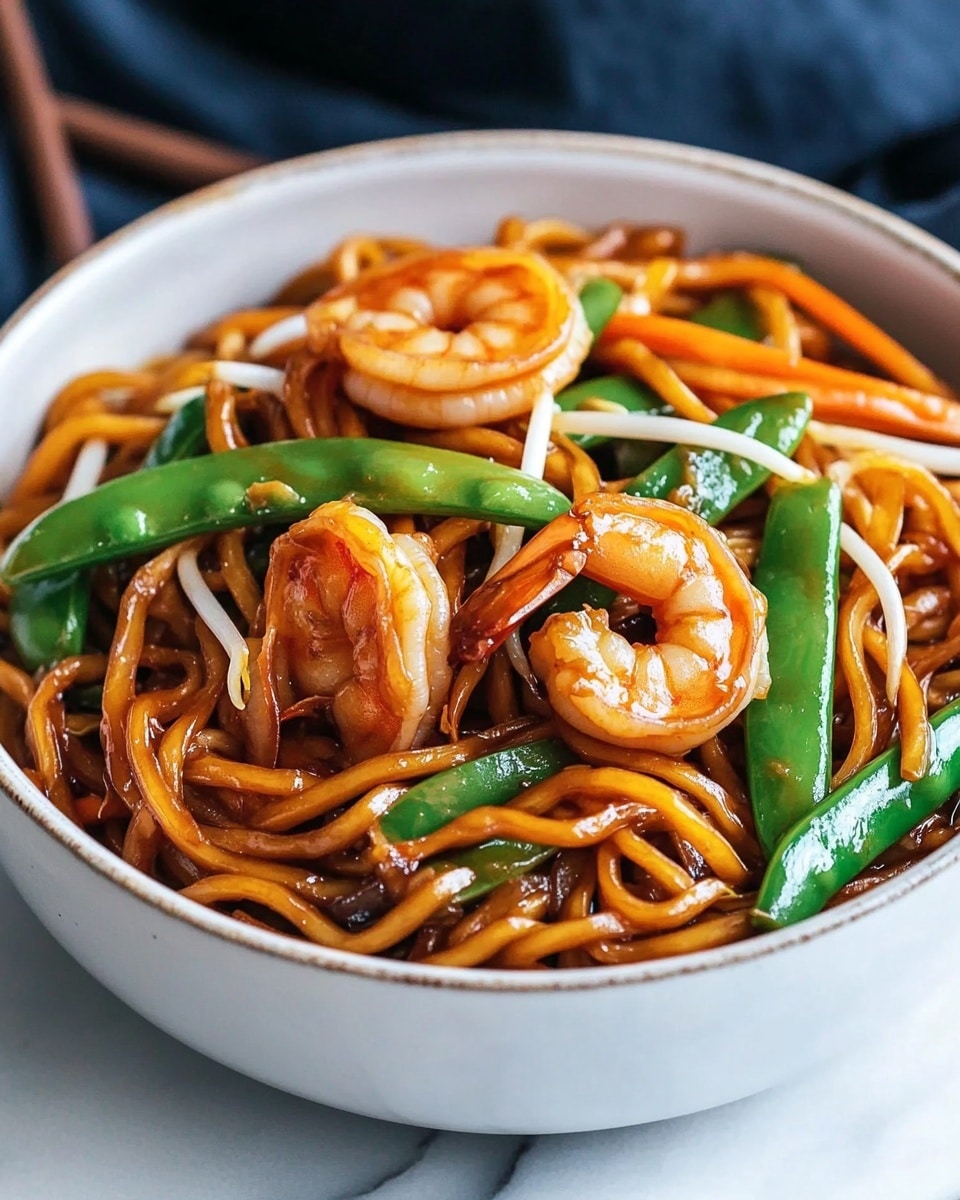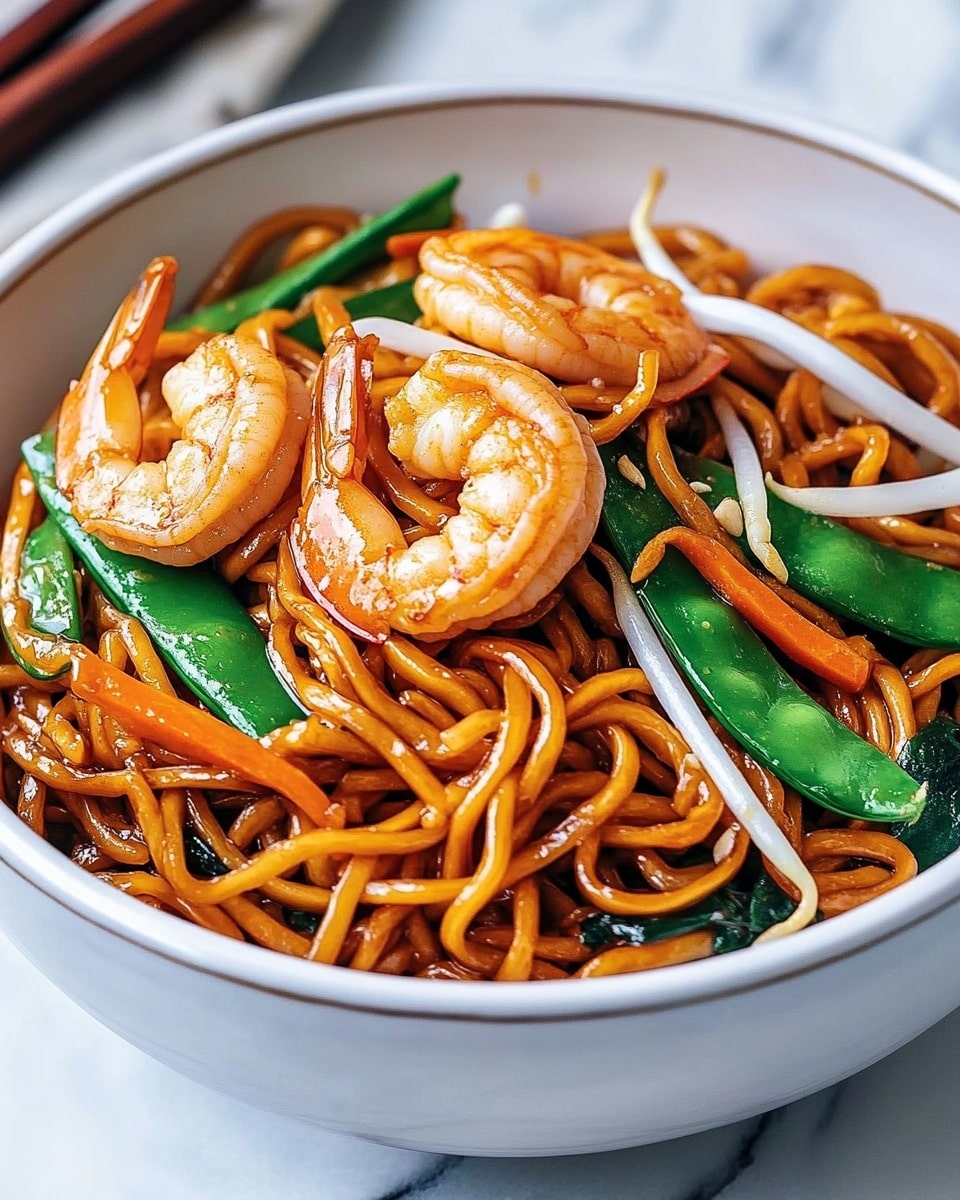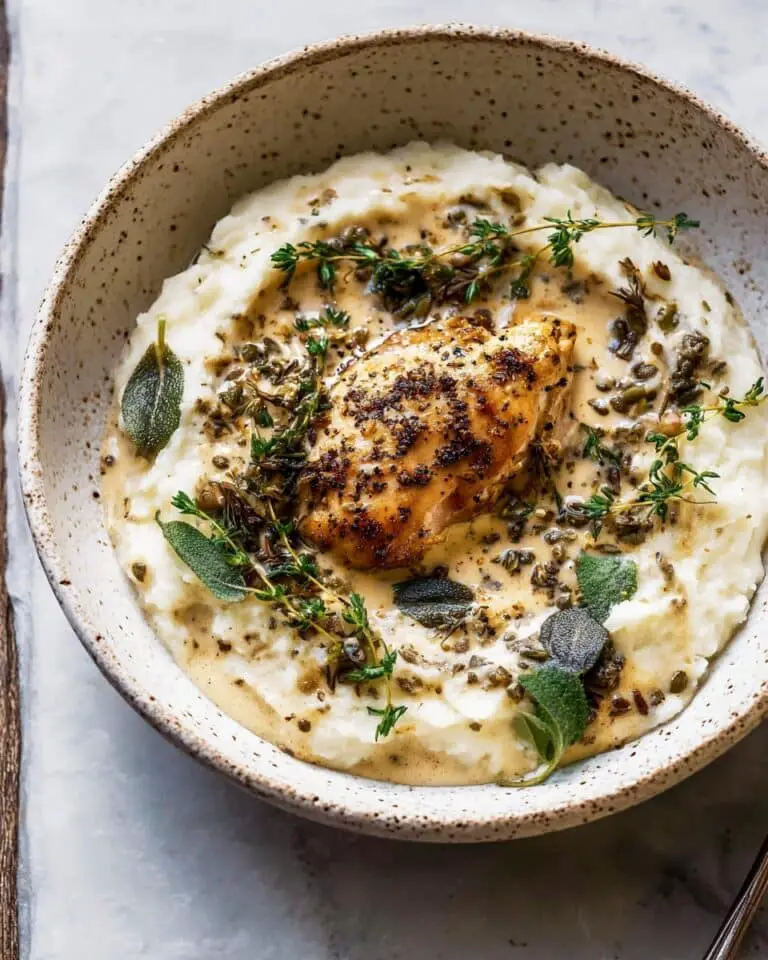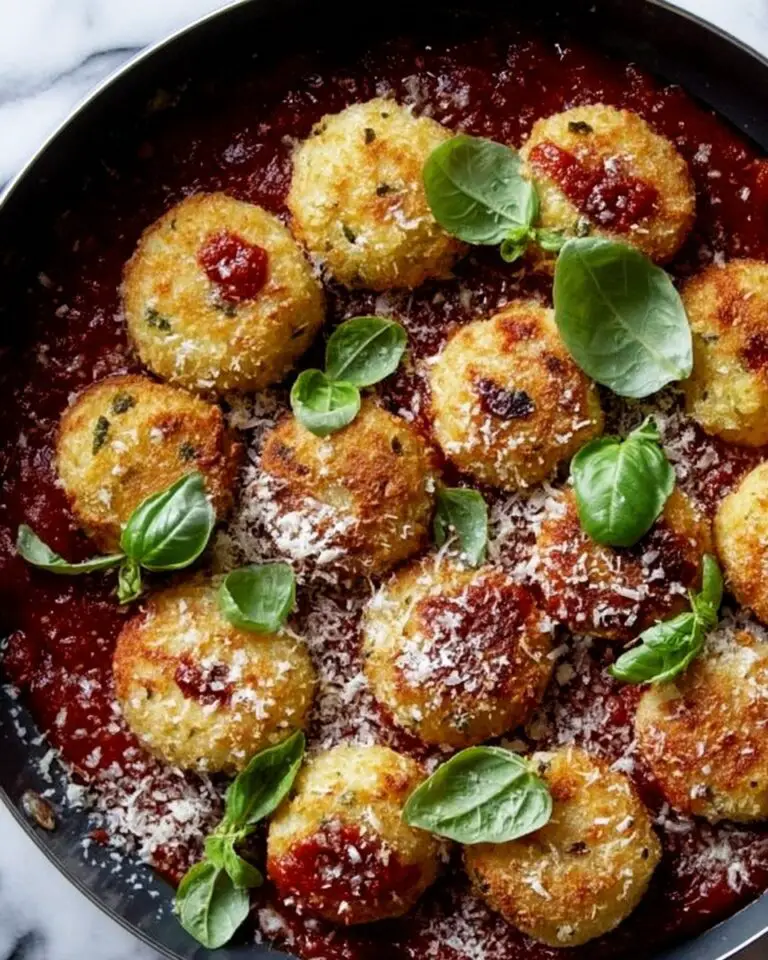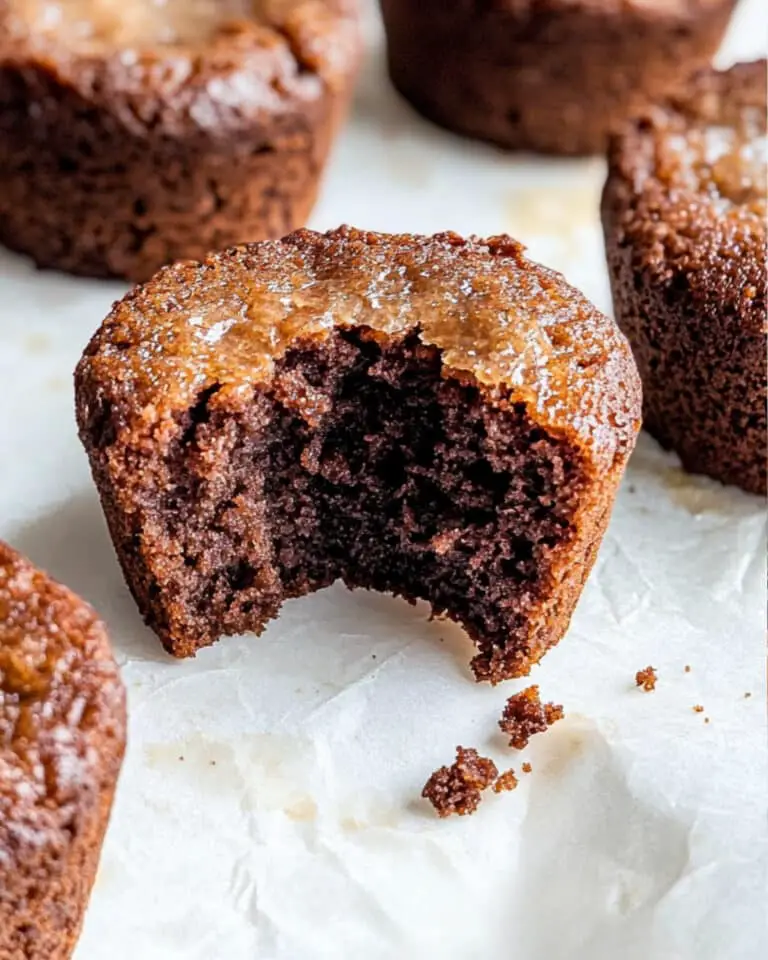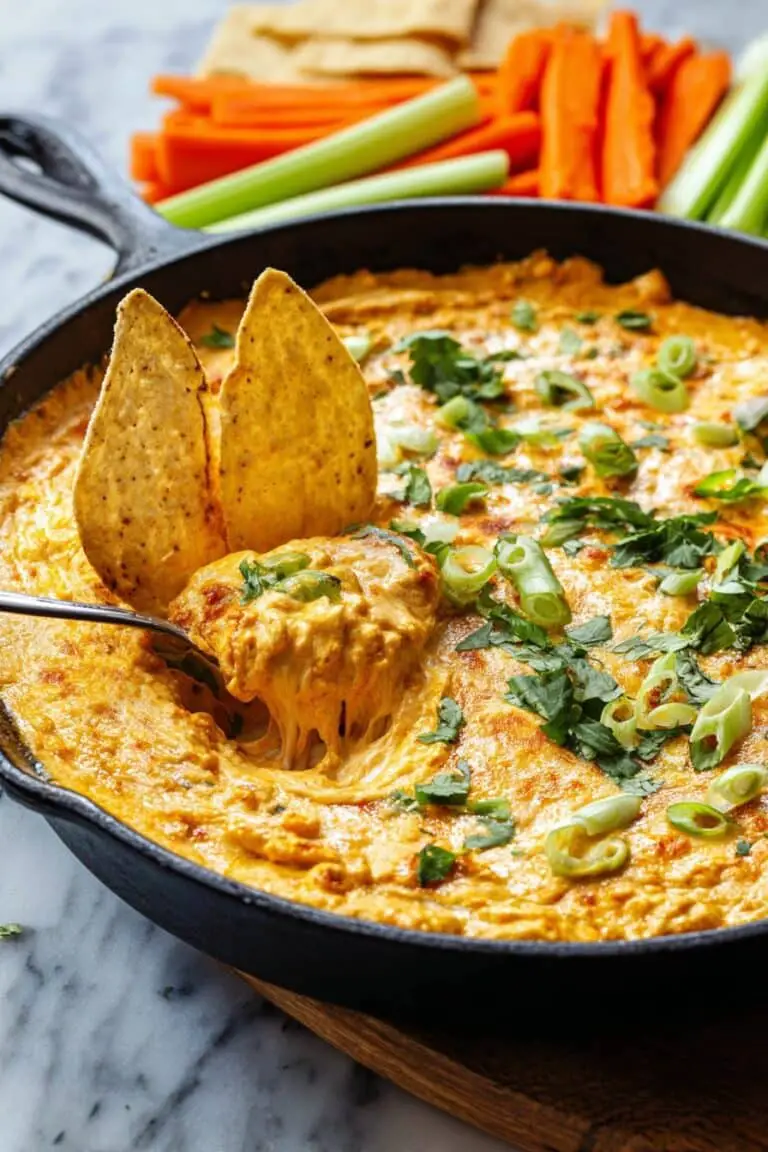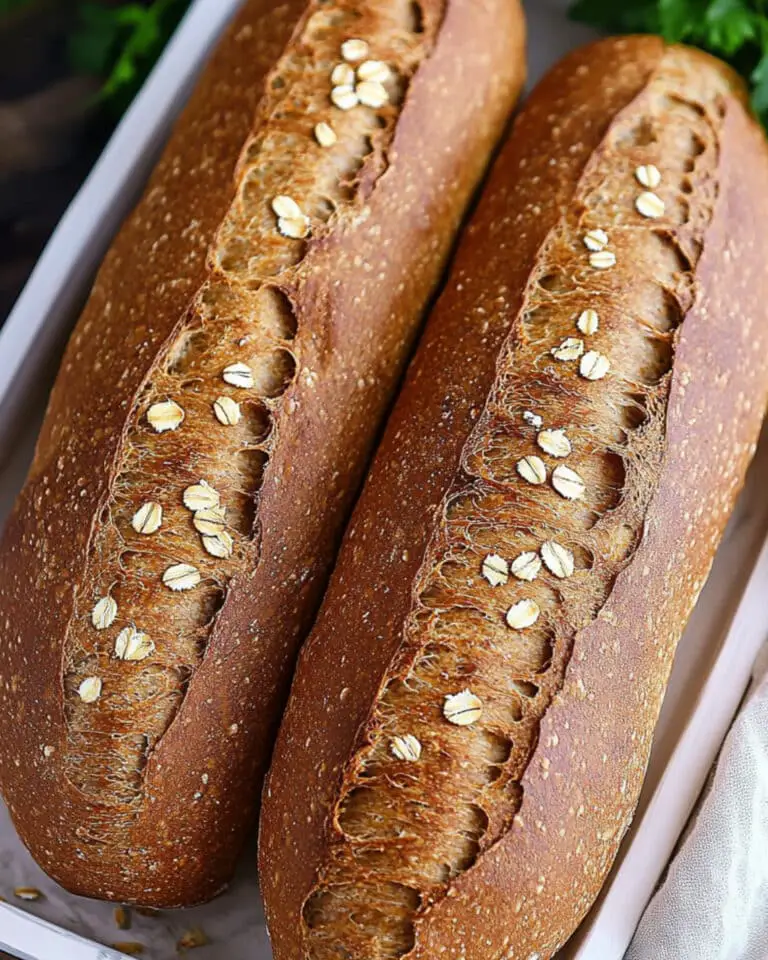If you’ve been craving a home-cooked Chinese takeout classic, this Shrimp Lo Mein Recipe is exactly what you need to try next. It’s quick, packed with vibrant veggies and tender shrimp, and the noodles get perfectly coated in a savory sauce that’s a little sweet, a little umami, and totally irresistible. I love this dish because it feels comforting but never heavy, making it my go-to for busy weeknights when I want something satisfying without hours in the kitchen.
When I first tried making shrimp lo mein at home, I wasn’t sure if I could get the stir-fry just right or make noodles that didn’t stick together. After a few tweaks (which I’ll share), it turned into something my whole family goes crazy for. Whether you’re cooking for a crowd or just want a delicious weeknight meal, this Shrimp Lo Mein Recipe is worth every step – you’ll find fresh noodles, crisp veggies, and juicy shrimp come together in a way that feels restaurant-level but homemade.
Why You’ll Love This Recipe
- Quick and Easy: Ready in about 30 minutes, perfect for busy nights without sacrificing flavor.
- Fresh and Flavorful: Crisp vegetables and tender shrimp balance beautifully with the savory sauce.
- Customizable: Easily swapped veggies or protein to suit what you have on hand or prefer eating.
- Authentic Taste at Home: Uses traditional ingredients like Shaoxing wine and oyster sauce for rich depth you’ll find in restaurants.
Ingredients You’ll Need
The key to nailing this Shrimp Lo Mein Recipe is picking fresh noodles and balancing the sauce. Opt for fresh lo mein noodles if you can find them—they’re softer and soak up the sauce beautifully. The sauce ingredients bring classic umami and a touch of sweetness, creating that comforting flavor we all love.
- Lo mein noodles: Fresh is best, but dried can work—just don’t overcook them.
- Light soy sauce: Adds salty depth without overpowering the dish.
- Dark soy sauce: Provides rich color and a touch of sweetness.
- Shaoxing wine: A splash of this brings authentic Chinese flair; you can substitute dry sherry if needed.
- Oyster sauce: Key for that savory, slightly sweet umami punch.
- Granulated sugar: Balances out the salty and savory notes.
- Toasted sesame oil: A little goes a long way to bring a nutty aroma.
- Ground white pepper: Adds subtle heat and earthiness without overwhelming.
- Scallions: White/light green parts for flavor base, dark green parts for freshness and garnish.
- Vegetable oil: For stir-frying; neutral oils like canola or sunflower work too.
- Carrots: Shredded for some crunch and natural sweetness.
- Snow peas: Crisp and fresh, they brighten the dish.
- Water chestnuts: Adds a surprising crackle that I adore.
- Bamboo shoots: Slightly sweet, subtle texture complements the stir-fry.
- Raw shrimp: Peeled and deveined; size doesn’t have to be exact, just you want juicy bites.
- Garlic cloves: Minced for that aromatic punch.
- Fresh ginger: Grated finely for a gentle warmth.
- Mung bean sprouts: Tossed in at the end for crunch and freshness.
- Extra soy sauce, chili oil, rice vinegar: Optional, for customizing your own bowl at the table.
Variations
I like to keep things flexible with this Shrimp Lo Mein Recipe, making it my own depending on what’s in season or what my family is craving. Feel free to swap shrimp for chicken or tofu if you want a vegetarian version, or switch up the veggies for whatever fresh produce you have at hand.
- Protein swap: I once used thinly sliced beef instead of shrimp — just as tasty, and my family loved the heartier touch.
- Vegetable swap: Broccoli florets or bell peppers work great if you want a colorful twist.
- Make it spicy: Adding chili oil during the last toss or sriracha to the sauce gave my husband the kick he craves.
- Gluten-free: Use rice noodles and tamari sauce to keep it friendly for gluten-sensitive eaters.
How to Make Shrimp Lo Mein Recipe
Step 1: Perfect Your Noodles First
Get your noodles boiling while prepping everything else — timing is key here. I usually cook them for 3 to 5 minutes until they’re just al dente; you want some firmness to hold up in the stir-fry. Don’t skip rinsing them under cool water—that step stops cooking and keeps noodles from sticking together. Once drained, toss with a little oil if you’re not using immediately to keep them separated.
Step 2: Whisk Together the Flavorful Sauce
While the noodles cook, mix light soy sauce, dark soy sauce, Shaoxing wine, oyster sauce, granulated sugar, toasted sesame oil, and white pepper in a bowl. I like to make this ahead because it gives the flavors time to meld just before tossing with everything else. This sauce is your magic touch — it brings everything together with that rich, deep flavor.
Step 3: Stir-Fry Your Veggies with a Golden Touch
Heat your wok or largest skillet until really hot, then add a tablespoon of vegetable oil. Toss in shredded carrots, snow peas, water chestnuts, and bamboo shoots, stirring quickly for about 2 minutes until bright and just tender. You want them crisp-tender—overcooking can turn veggies mushy, which is the last thing you’d want here. Once done, set them aside; this keeps the stir-fry balanced at the end.
Step 4: Cook Shrimp Till They’re Pink and Juicy
In the same pan, add another tablespoon of oil and lay in the shrimp. They only need about 2-3 minutes, until they turn pink and opaque with a slight golden edge. Overcooking will make them rubbery, so keep an eye out and take them off the heat as soon as they’re done. Set the shrimp aside with your veggies.
Step 5: Build the Aromatic Base
Use your last tablespoon of oil to sauté minced garlic, grated ginger, and the white/light green parts of scallions for about a minute. This fragrant mixture wakes up the aromatics of the dish and sets a beautiful flavor foundation to build on.
Step 6: Toss Everything Together and Finish with Sauce
Return your veggies and shrimp to the pan, then add noodles and mung bean sprouts. Toss everything well to mix. Pour the sauce evenly around the pan’s sides and add the dark green scallion segments last. Keep cooking and tossing for 1-2 more minutes until the noodles are warmed through and perfectly coated in sauce. Taste and adjust seasoning with extra soy sauce or pepper if needed—this step makes it truly yours.
Pro Tips for Making Shrimp Lo Mein Recipe
- Don’t Overcook Noodles: Rinse them under cold water immediately after boiling to stop the cooking and prevent mushy lo mein.
- Prep Everything First: Once stir-frying starts, things move quickly—have all your ingredients chopped and ready.
- Use High Heat: This keeps veggies crisp and shrimp tender, plus it helps the sauce stick to the noodles beautifully.
- Customize Sauce Amount: Taste before serving — add more soy or oyster sauce if you like it saltier or more umami-packed.
How to Serve Shrimp Lo Mein Recipe
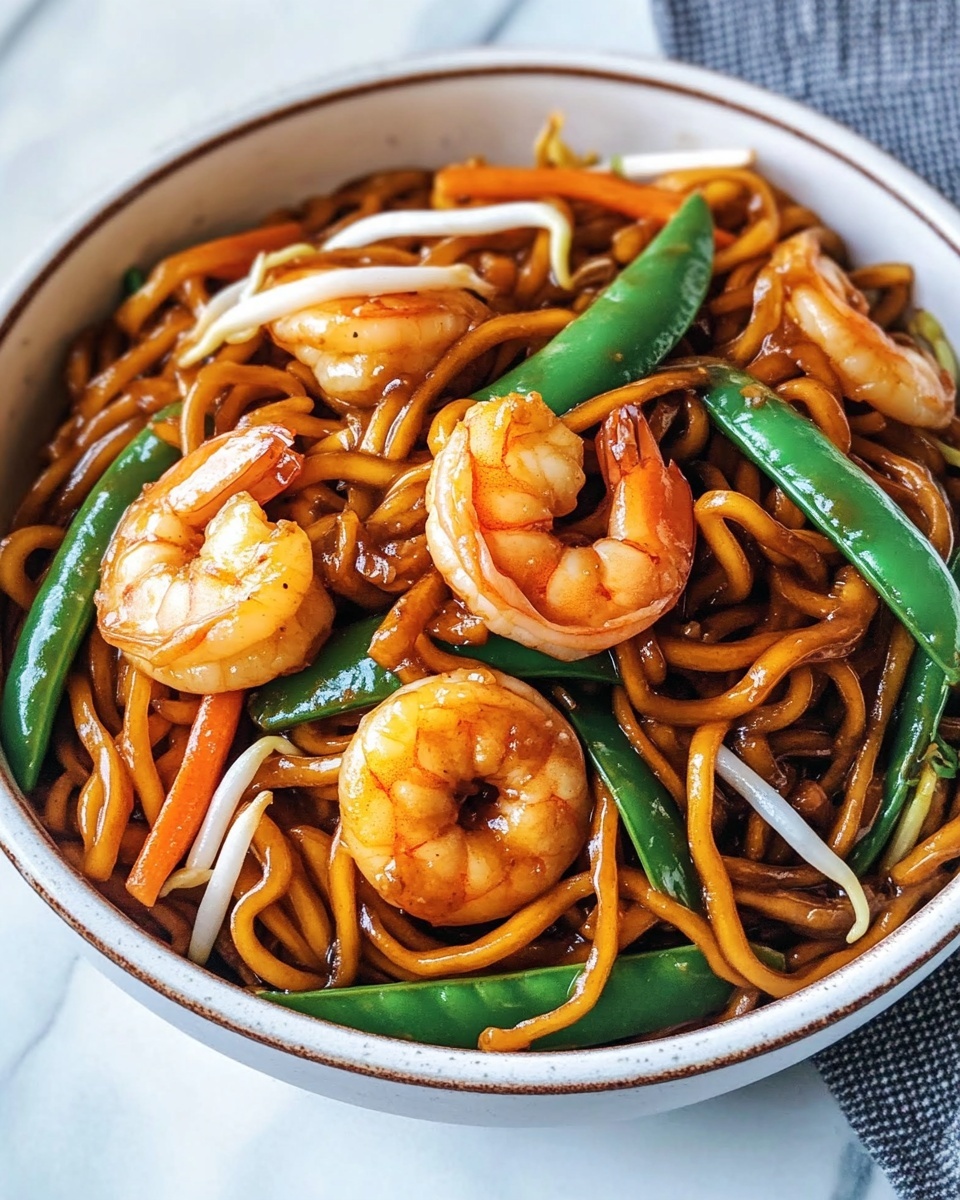
Garnishes
I usually sprinkle more chopped dark green scallions on top for freshness and a tiny drizzle of toasted sesame oil for extra aroma. Sometimes, I pass around chili oil and rice vinegar too, so everyone can adjust the heat and tanginess right at the table—it’s a fun way to personalize the flavors.
Side Dishes
Steamed white or jasmine rice pairs wonderfully if you want extra carbs, but honestly, the lo mein noodles fill you up nicely on their own. I also love serving a simple cucumber salad or edamame on the side—it adds a refreshing crisp contrast that balances the flavors perfectly.
Creative Ways to Present
For a special occasion, I like to plate this Shrimp Lo Mein Recipe in big family-style bowls, garnished with toasted sesame seeds and fresh cilantro. Another fun trick: serve it in little lettuce cups for a fresh handheld twist that’s great for parties or light lunches.
Make Ahead and Storage
Storing Leftovers
I usually let leftovers cool to room temperature, then transfer them to an airtight container and refrigerate for up to 3 days. The noodles soak up sauce as they sit, so they get even more flavorful overnight, but keep in mind veggies might soften a bit.
Freezing
Freezing shrimp lo mein isn’t my favorite because the texture of the noodles and veggies can get mushy when thawed. However, if you have to freeze, spread out into a single layer on a baking sheet first to freeze quickly, then transfer to a freezer bag for up to 1 month. Thaw in fridge overnight before reheating gently.
Reheating
I prefer reheating in a hot skillet or wok over medium heat with a splash of water or broth to loosen up the sauce and revive the crispness of the veggies. Microwave works in a pinch, but you might lose some texture and vibrancy.
FAQs
-
Can I use dried lo mein noodles for this recipe?
Yes! Dried lo mein noodles work well if fresh aren’t available. Just be sure not to overcook them—boil until just al dente and rinse under cold water immediately to stop the cooking process. This keeps them from becoming mushy during the stir-fry.
-
What other proteins can I use instead of shrimp?
Chicken, beef, or tofu all make great alternatives. For chicken or beef, thinly slice and cook in the same way you would the shrimp. Tofu should be pressed well and stir-fried until golden for the best texture.
-
Is there a substitute for Shaoxing wine?
If you don’t have Shaoxing wine on hand, dry sherry or a splash of mirin makes a good substitute. You can also omit it, but it does add a subtle, authentic flavor that’s worth seeking out if you can.
-
How do I keep the shrimp from getting rubbery?
Cook shrimp quickly on high heat for just 2-3 minutes until they turn pink and opaque. Overcooking causes them to get tough, so remove them from the heat as soon as they’re done.
-
Can I make Shrimp Lo Mein Recipe ahead of time?
Yes, you can prep the sauce, chop veggies, and even boil the noodles a few hours ahead, keeping them lightly oiled and covered. For best results, toss it all together and stir-fry just before serving for the freshest flavors.
Final Thoughts
I absolutely love how this Shrimp Lo Mein Recipe comes together every single time—it’s simple but bursting with layers of flavor that feel special without fuss. I often find myself reaching for this recipe when I want a reliable crowd-pleaser that’s quick but still tastes like I spent hours in the kitchen. I hope you’ll give it a try and find the same joy in cooking and sharing it with your people that I have. Happy cooking!
Print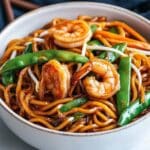
Shrimp Lo Mein Recipe
- Prep Time: 15 minutes
- Cook Time: 15 minutes
- Total Time: 30 minutes
- Yield: 4 to 6 servings 1x
- Category: Main Course
- Method: Stovetop
- Cuisine: Chinese
Description
Shrimp Lo Mein is a classic Chinese stir-fry noodle dish featuring tender lo mein noodles tossed with juicy shrimp, crisp vegetables, and a savory soy-based sauce. This recipe combines fresh and canned vegetables with flavorful aromatics like garlic and ginger, creating a vibrant and satisfying meal perfect for weeknight dinners or casual gatherings.
Ingredients
Noodles
- 1 pound lo mein noodles (fresh, if possible)
Sauce
- 2 tablespoons light soy sauce
- 1 tablespoon dark soy sauce
- 2 tablespoons Shaoxing wine
- 2 tablespoons oyster sauce
- 1 teaspoon granulated sugar
- 1 teaspoon toasted sesame oil
- Pinch ground white pepper
Stir-Fry
- 6 scallions
- 3 tablespoons vegetable oil, divided
- 1 cup shredded carrots
- 1 cup snow peas, trimmed
- 8 ounce can water chestnuts, drained
- 8 ounce can bamboo shoots, rinsed and drained
- 1 pound raw shrimp (26/30), peeled and deveined, tail on or off
- 1 tablespoon minced garlic cloves
- 2 teaspoons grated fresh ginger
- 2 cups mung bean sprouts
- Extra soy sauce, chili oil, and/or rice vinegar, for serving (optional)
Instructions
- Make the Noodles: Boil lo mein noodles in a pot of lightly salted water for 3-5 minutes until al dente. Drain and rinse under cool water to stop cooking. Set aside.
- Make the Sauce: While noodles are boiling, whisk together light soy sauce, dark soy sauce, Shaoxing wine, oyster sauce, granulated sugar, toasted sesame oil, and ground white pepper in a bowl. Set aside.
- Prepare Scallions: Cut the scallions in half lengthwise to separate the white/light green parts from the dark green parts. Thinly slice the white and light green parts. Cut the dark green parts into 1-2 segments about 2 inches long. Set aside.
- Cook Vegetables: Heat a wok or large 12-inch skillet over high heat until very hot. Add 1 tablespoon of vegetable oil and sauté shredded carrots, snow peas, water chestnuts, and bamboo shoots for about 2 minutes, until crisp-tender. Remove from pan and set aside.
- Cook Shrimp: Heat another tablespoon of oil in the wok or skillet and sauté shrimp until pink, translucent, and lightly browned on the edges, about 2-3 minutes. Remove from pan and set aside.
- Sauté Aromatics: Heat the remaining 1 tablespoon of oil in the wok or skillet. Add minced garlic, grated ginger, and sliced white and light green scallions. Sauté for 1 minute until fragrant.
- Combine Ingredients: Add the sautéed vegetables, cooked shrimp, drained noodles, and mung bean sprouts to the pan. Toss everything together to combine evenly.
- Add Sauce and Finish: Pour the prepared sauce around the sides of the pan. Add the dark green scallion segments. Cook, tossing continuously, for 1-2 minutes to heat through and allow flavors to meld.
- Season and Serve: Taste the lo mein and adjust seasoning with additional soy sauce and ground white pepper if desired. Serve hot or warm with optional extra soy sauce, chili oil for spice, or a few drops of rice vinegar for tanginess passed at the table.
Notes
- Use fresh lo mein noodles if available for best texture, but dried noodles can be used as well.
- Shaoxing wine adds authentic depth but dry sherry can be substituted if unavailable.
- Adjust vegetables based on preference or seasonality – snap peas, bell peppers, or baby corn work well.
- Tail-on shrimp is great for presentation, but tails can be removed if preferred.
- Ensure wok or skillet is very hot before stir-frying to achieve a nice sear and avoid sogginess.
- This dish can be made vegetarian by substituting shrimp with tofu and using vegetarian oyster sauce.
Nutrition
- Serving Size: 1 serving (approx. 1/5th of recipe)
- Calories: 420
- Sugar: 4g
- Sodium: 850mg
- Fat: 12g
- Saturated Fat: 2g
- Unsaturated Fat: 8g
- Trans Fat: 0g
- Carbohydrates: 50g
- Fiber: 4g
- Protein: 28g
- Cholesterol: 160mg

